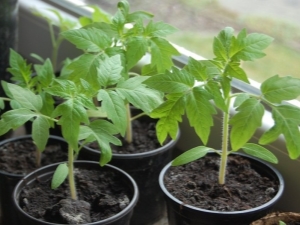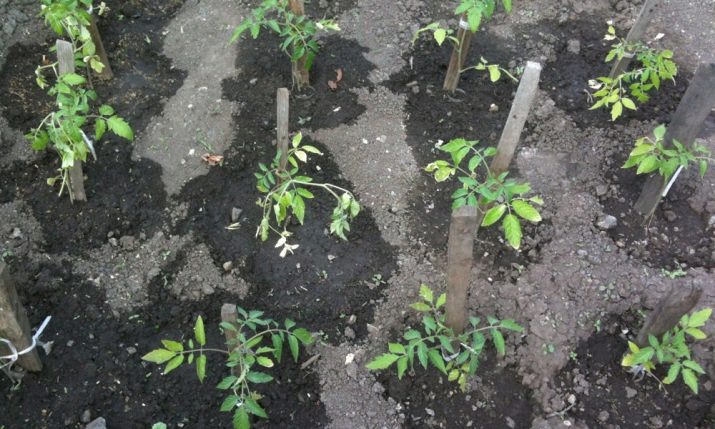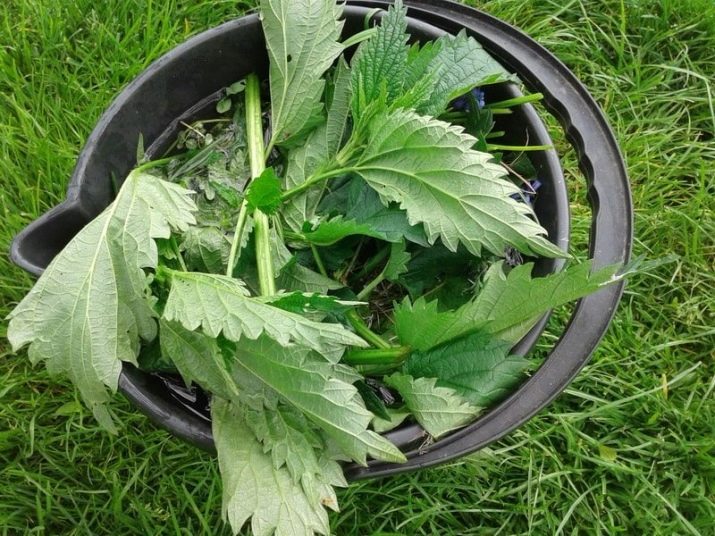Rules for feeding seedlings of tomatoes by yeast

Feeding tomatoes with yeast is quite a popular way of supporting the culture, which, thanks to its availability and natural ingredients, is gaining more and more fans. Yeast compounds are completely safe and are highly efficient and easy to prepare.
Special features
Yeast are single-celled fungi, are a source of bacteria of natural origin and contain a large amount of vitamins, amino acids, proteins and trace elements. The introduction of yeast dressings does not change the chemical composition of the soil, due to their organic origin. The work of single-celled bacteria is based on the following principle: actively propagating in favorable conditions, the mushrooms process organic substances that are in close proximity to the root system of tomatoes.
As a result of their productive activity, the formation of inorganic substances from organic occurs. Mushrooms-decomposers convert the remains of living organisms and fallen leaves contained in the soil into nitrogen and phosphorus compounds, and also have a beneficial effect on soil organisms that increase soil fertility.
Benefit and harm
A large number of positive reviews about the use of yeast additives due to a number of positive effects of such compounds on seedlings.
- In comparison with plants that have not undergone yeast treatment, the fertilized shoots show increased vitality and rapid adaptation when transplanted into open ground.
- Even in the case of a lack of natural lighting, shoots are not prone to stretching. This results from the fact that at yeast feeding there is a saturation of plants with additional energy.
- There is a significant increase in the immunity of plants, so that the seedlings become immune to a number of diseases and the effects of many pests.
- The number of small root shoots increases markedly, which leads to a general strengthening of the roots and significantly increases the survival rate of shoots after diving and transplanting into open ground. In addition, the presence of a strong root system increases the number of ovaries by 2–8 times and strengthens the aboveground part of plants well.
- The growth of shoots is significantly accelerated and there is a rapid increase in green mass.
- The overall endurance of seedlings is increased to a deficiency or an overabundance of moisture and sunlight.
However, the yeast feeding method also has disadvantages. The fact is that in the process of fermentation, potassium begins to decompose actively. Therefore, to prevent this unproductive process, together with the yeast composition, wood ash is used.
Therefore, to prevent this unproductive process, together with the yeast composition, wood ash is used.
Cooking recipes
Top dressing of tomato seedlings with yeast additives can be done with the help of dry and raw yeast. In order to properly feed the tomatoes, there are several ways.
- The most common and simplest of them is the following: half a liter of warm water must be mixed with 100 grams of raw yeast, then wait until they are completely dissolved and dilute the mixture with water at a rate of 1:10.
- The next method involves diluting 10 g of dry yeast in a bucket of warm water, followed by the addition of 2 tablespoons of sugar. The prepared mixture is left to ferment for three hours, after which the resulting composition is diluted with water in a ratio of 1: 5.
- The third way is to prepare a mixture of 100 g of raw yeast, half a glass of sugar and three liters of warm water. The resulting mixture is covered with a loose napkin or gauze and clean for 6-7 days in a warm dark place. After a week, the product is taken out and diluted with one cup of the mixture per 8 liters of water at room temperature. This recipe is very effective.With the help of such feeding, the growth and development of shoots is activated, and the root system volume increases five times.
In addition to water, granulated sugar and yeast, some supplements include wheat, nettle, hops, chicken droppings and wood ash. An interesting recipe is with the use of mowed grass, which is suitable for owners of private houses and summer cottages who have the opportunity to procure the necessary amount of grass. It is easy to make such a solution; all you need to do is to put one bucket of freshly mown herbs in a 50 liter barrel, add 2.5 packs of raw thawed yeast and a loaf of white bread.
The resulting mixture must be poured with rain water and left to ferment for three days. As a grass, it is better to use hops, plantain or nettles.
The best option is hops, but due to the fact that it does not grow in all regions, other types of herbs can be used.
Milk is also used as an ingredient in a yeast supplement. In order to obtain such a composition, it is necessary to prepare a concentrate of 200 g of raw yeast and 1 l of water. The prepared composition should be diluted with homemade milk in a ratio of 1: 5 and insist for three hours. Then the resulting fermentation mixture should be diluted once more with water in a ratio of 1:10, after which you can begin watering.
A solution of yeast with chicken droppings is also considered quite effective, however, due to the low consumer availability of the litter, this method is not used very often. To prepare the supplement, you must mix a third of a cup of sugar with 100 g of live yeast, two glasses of wood ash and the same amount of chicken dung. The resulting mass pour a glass of warm water and put to wander for 2 hours. After the fermentation process enters the active phase, the mixture is poured 10 liters of well or rain water and left for another three hours.
After this time, you can proceed to the radical fertilization, during which you need to remember that formulations containing chicken droppings are not recommended to be poured at the very root.
In order not to harm the young shoots, you just need to moisten the ground around the hole, without approaching the stem closer than 10 cm. Moreover, fertilization, including bird droppings, should be carried out only before the flowering of tomatoes. Otherwise, the green mass, which begins to grow rapidly after the introduction of litter, will not allow the ovaries to develop normally and crush them.
Sourdough wheat is also popular among gardeners. In order to prepare the fertilizer, you should soak one cup of wheat for a day, then carefully chop the swollen grains and mix them with two spoons of sugar and the same amount of flour. The resulting solution should be put on a small fire and boil, stirring constantly, about 25 minutes. Next, the container with the agent must be removed to a dark and dry place and leave for another day. Next, the resulting mixture should be diluted in 10 liters of water, and you can start watering.
A very unusual recipe from yeast with the addition of sugared jam. For its preparation, bread crusts, 100 grams of live yeast, a glass of sour rustic milk and the same amount of wood ash and jam are taken. Components are placed in a ten-liter tank, filled with hot water and left for 7 days to ferment. After this time, you can begin to water the plants, and additional dilution of the composition with water is not required.
Hop-hop fertilizer is also easy to make at home. For the manufacture of the composition are used as fresh and dried cones, 4 tbsp. spoons of flour, 2 spoons of sugar and a couple of medium-sized potatoes. First, the cones are boiled for 50-60 minutes, then the broth is filtered, flour and granulated sugar are added to it and left for a couple of days in a warm place.Then in the tinder mixture on a large grater potatoes and cleaned in a warm place for another day. Next, sourdough glass diluted with 10 liters of water and begin watering.
Recommendations for use
Feeding a tomato is done in two ways: basal and foliar. In the first case, the solution is applied directly under the root of the shoot, and in the second it is applied to its above-ground part by spraying. The solution for foliar fertilizing should have a less saturated concentration than the composition that is applied to the soil. Experienced gardeners recommend not to exceed the dosage of the leaven of more than 1:20, and to spray only in the morning or evening hours. Otherwise, the plant can get burned and die.
One of the main conditions for the effective work of yeast fungi is their ability be activated only at temperatures above 16 degrees. Therefore, the shoots should be fertilized if the plant is in an apartment or a greenhouse, or if external temperatures have exceeded the maximum permissible minimum mark.
In general, yeast treatment should be performed at least three times during the entire growing season.
The first dressing is recommended 6-7 days after transplantation of young shoots in a greenhouse or open ground. Fertilizers should be applied using the basal method, pouring 0.5 liters of solution under each bush.
The second feeding is made 2-3 weeks after the first one and is carried out by adding one liter of funds for each plant.
The third fertilization is carried out before flowering and is already two liters of the composition for each root. The procedure can be performed both by spraying and basal method.
In case of a disease of plants after flowering, you can perform additional processing yeast composition. This will strengthen the immune system of tomatoes and speed up the process of their recovery.
Yeast spraying is especially effective when fungal diseases appear, the first signs of which are the darkened leaves of the plant. Quite a common way of feeding is burying dry yeast next to the bushes, followed by their regular irrigation. This technique is somewhat inferior in efficiency to the use of liquid funds, but does not require additional time.
The introduction of yeast compounds is recommended to be combined with supplements containing potassium and calcium. To do this, in 10 liters of warm water, 30 grams of potassium sulfate should be diluted, and then watered. The remaining liquid yeast compounds can be used for watering cabbage, cucumbers and flowers.
Top-dressings from yeast are the most affordable and effective way to support young plants during their development and allow you to get a rich and tasty harvest in the future.
See the following video for tips on feeding tomato seedlings.
































